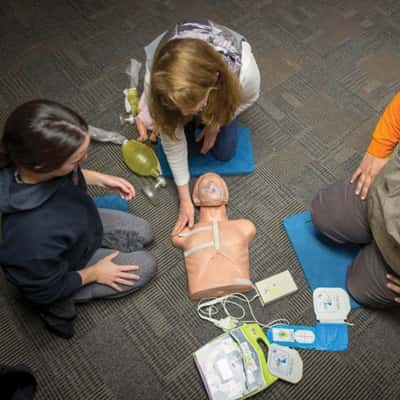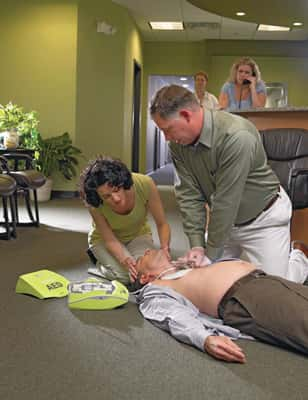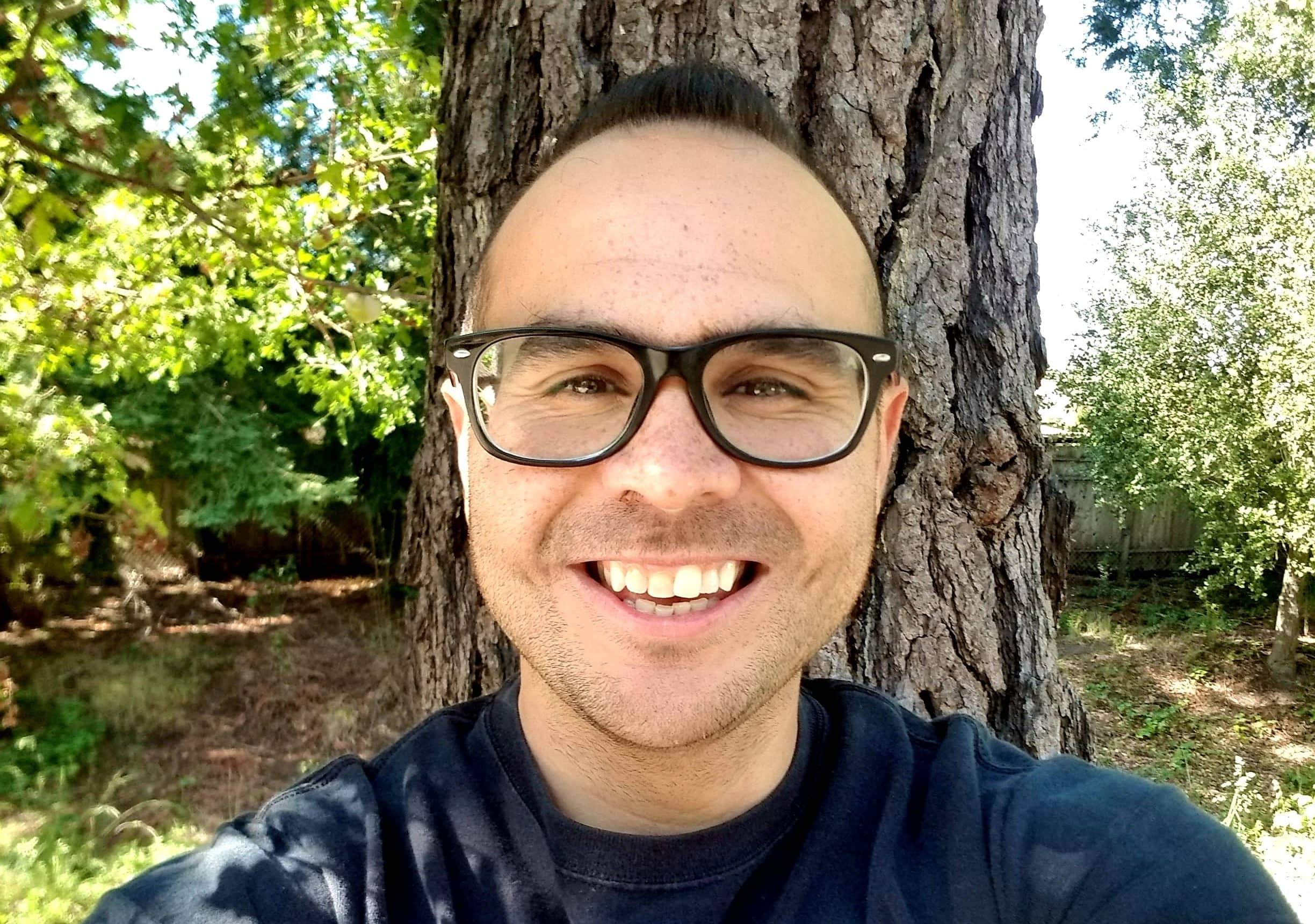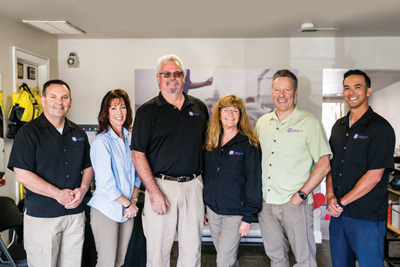The cozy confines of the cubicle world aren’t considered an inherently dangerous environment, unless paper cuts and weekly deadlines are particularly menacing to you. However, all businesses are required to have certain safety items on site as a precautionary measure for their employees. First aid kits, fire extinguishers and safety alarms are a few of the items mandated by the Occupational Safety and Health Administration (OSHA) to meet minimum safety requirements.
Survival CPR & First Aid in Santa Rosa think OSHA should add another item to the list, an Automated External Defibrillator (AED). The lightweight and portable device is used to administer an electric shock through the chest wall to the heart; the shock can potentially stop an irregular heart beat (arrhythmia) and allow for a normal rhythm to resume following sudden cardiac arrest. Eric Thomson, 53, a retired deputy sheriff and former EMT of the Sonoma County Sheriff’s Department believes the machines are the difference between life and death.

“An American Health Association study has proven that if you can shock someone within three minutes of collapse, you have a 93 percent chance of saving them,” say Thomson. “You can’t wait for the fire department to show up. I’ve seen a number of people saved because an AED machine was close by.”
Thomson spent years learning the laws, regulations and training associated with first aid. He is part of the group who started Survival CPR & First Aid in 2015, the venture is partnered with a local insurance specialist as a training center and distributor of AEDs and first aid equipment. The brick and mortar location on Old Redwood Highway in Santa Rosa hosts training sessions on responding to CPR and injuries. They also visit local businesses to provide hands-on training. He says the education on AEDs is increasing, and so are the public places choosing to have a machine on site.
“It isn’t just companies anymore, but schools are now carrying these machines liability-free,” he says. California lawmakers address these liability concerns by including AEDs under “Good Samaritan” protections for good-faith efforts to help. “One of the big questions is liability. You need a prescription from a physician to have one for use. Survival CPR & First Aid developed a program that charges $150 a year, which includes a prescription from a physician and the software to handle inspection.”
California lawmakers address these liability concerns by including AEDs under “Good Samaritan” protections for good-faith efforts to help. “One of the big questions is liability. You need a prescription from a physician to have one for use. Survival CPR & First Aid developed a program that charges $150 a year, which includes a prescription from a physician and the software to handle inspection.”
Tucker Bierbaum, M.D., is an emergency physician at Memorial Hospital in Santa Rosa for 31 years, is the EMS medical director for the hospital and an advocate of AEDs. “The only two things that have improved cardiac arrest survival is early, properly performed CPR and accessible electricity,” he says. Bierbaum lauds the Zoll AED machine as an easy to operate model. “Just put it on, and it’ll tell you what to do. It produces a superior record of what went on,” he says. “It allows a physician to review and assess the quality of CPR rendered during the incident.”
Bierbaum warns that CPR alone isn’t enough to resuscitate someone experiencing cardiac arrest. “The only thing that can save a life in an arrest rhythm is electricity,” he says. Thomson believes AED machines should be “everywhere where you want people to survive cardiac arrest” and says that he’s seen more public-accessible AEDs in Europe than in the U.S. This is poised to change however, as recent changes in California law require AEDs to be on site in health clubs and schools.
 The American Red Cross estimates that AEDs have the ability to save close to 50,000 lives each year. Local survivors who owe their lives to the machine celebrate with a “survivors reunion” each year, an event sponsored by local hospitals. “We bring together survivors of cardiac arrest in the past year, along with the chain of people who were involved in their survival,” Bierbaum says. “A majority of survivors owe their lives to AED machines.”
The American Red Cross estimates that AEDs have the ability to save close to 50,000 lives each year. Local survivors who owe their lives to the machine celebrate with a “survivors reunion” each year, an event sponsored by local hospitals. “We bring together survivors of cardiac arrest in the past year, along with the chain of people who were involved in their survival,” Bierbaum says. “A majority of survivors owe their lives to AED machines.”
In addition to the machine’s invaluable ability to save lives, AEDs can potentially save companies money. “If you can reduce injury and death, it might lower a businesses workers’ compensation injuries for those wondering about their bottom line,” Thomson says.
Author
-

Michael moved from Southern California to the North Bay in 2017, enrolling at Santa Rosa Junior College to pursue journalism and escape traffic. He was Co-Editor-in-Chief of the student paper. His work is published in The Press Democrat, The North Bay Bohemian, Pacific Sun and Sonoma Magazine.
View all posts




